I have a data set where each observation has 3 variables: time, success (yes or no), damage( yes or no). but each participant was try 3 times each of the 3 different methods (A,B,C).
But the organization of the data is the worst I could imagine: The data was collected in a way that each row is one participant, but I need each row to be a different observation.
The raw data looks something like this:

And I want something like this:

I tried by using pivot longer() but this works only for individual columns, if I do it here I just get repetitions of observations and the overlap and get all scrambled.